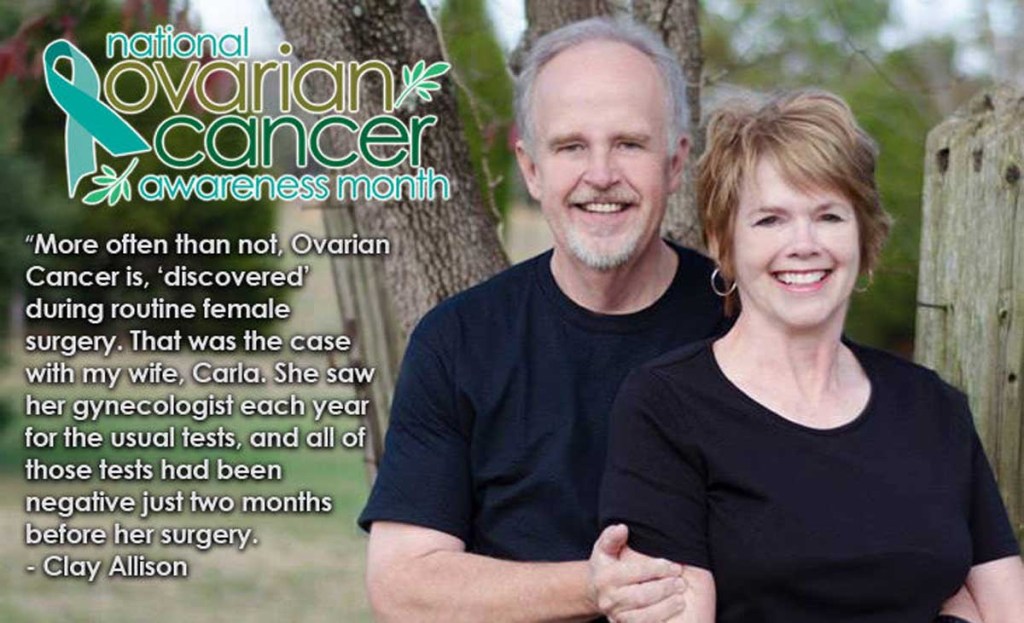When one win isn’t enough
Published 9:15 am Tuesday, September 8, 2015

- Clay and Carla Allison
My wife, Carla Allison, celebrated an anniversary earlier this year. She has now successfully fought Ovarian Cancer for more than 11 years.
Carla has undergone well over 100 rounds of chemotherapy and several major surgeries. She has participated in three clinical trials through UAB and is currently being treated with a Kinase Inhibitor and receiving daily nourishment via Total Parenteral Nutrition by IV.
Trending
For more, visit ovariancancer.org
When she was first diagnosed in 2004, she was presented with grim statistics — a less than 20 percent chance of survival for three years. By the time she began treatment for her first recurrence of Ovarian Cancer, none of the women she had gotten to know during the first treatment cycle were still alive.
Nationally, more than 22,000 women are diagnosed with Ovarian Cancer each year, and more than 14,000 women die each year. Up to 75 percent of women diagnosed with late-stage Ovarian Cancer die during that first year after diagnosis.
The majority of those deaths are those women diagnosed as late-stage. While most women are diagnosed in their late 60s, my wife was in her 40s when we received the diagnosis. Early detection/diagnosis with treatment has a much more successful rate for survival.
Sadly, most women are diagnosed in later stages of cancer because Ovarian Cancer is known as the cancer that whispers. There are no dramatic symptoms, nothing shouts, “CANCER!” Instead, there are subtle hints over a longer period of time while the cancer grows.
Some of those symptoms include unexplained bloating (women often think they are gaining weight); pelvic pain that is not debilitating and often diagnosed/treated as something else (such as gastric issues); a feeling of fullness after eating (often passed off as just eating too much or too quickly); urinary urgency or frequency which most women think of as typical as they age. Any or all of these things are often treated individually when presented to a physician. Sadly, by the time that the symptoms become debilitating, the cancer has progressed to late stage.
The CA 125 Cancer Antigen test used to be considered the gold seal for diagnosing Ovarian Cancer. It is no longer considered a diagnostic tool and it is now used to track Ovarian Cancer after it is diagnosed. So, there is no early detection test for Ovarian Cancer.
How is Ovarian Cancer diagnosed? More often than not, it is, “discovered,” during routine female surgery. That was the case with my wife. She saw her gynecologist each year for the usual tests, and all of those tests had been negative just two months before her surgery.
Pap smears do not reveal the presence of Ovarian Cancer. We were told the day before her surgery that she did NOT have Ovarian Cancer, even though she had an elevated CA 125. It was only after surgery began that tumors were discovered and she was then diagnosed as late stage, 3C.
September is designated each year as Ovarian Cancer Awareness Month. Just as you remember to get your oil changed regularly or to change the batteries in your smoke detectors, you need to have a certain time each year to proactively have screening done for Ovarian Cancer. Any woman who has a family history is at a higher risk, but they are not the only ones at risk.
My wife’s family had no known history of Ovarian Cancer. The best thing you can do is to know your own body. If one of the symptoms mentioned above occurs, go to your doctor and do not accept prolonged treatment of the symptoms alone. Demand that the cause of your symptoms be found. Remember, Ovarian Cancer whispers. You, on the other hand, need to be very vocal in your own health and be aware all year long.
Statistics
Ovarian cancer rates are highest in women aged 55-64 years. It accounts for about 3% of cancers among females, but it causes more deaths than any other female reproductive system cancer because of its difficulty to detect.
Symptoms
• Bloating
• Pelvic or abdominal pain
• Difficulty eating / feeling full quickly
• Urinary symptoms (urgency or frequency)
Increased Risk Factors
• Family history
• Has not given birth to any children
• Had her first child after 30
• Experienced menopause after 50
• Has never taken oral contraceptives
Detection
Early detection of ovarian cancer saves women’s lives. No screening test exists that can test all women for ovarian cancer. The Pap test does not test for ovarian cancer; it screens for cervical cancer.
Not only do researchers need to develop an early detection test for ovarian cancer, like mammograms for breast cancer and Pap tests for cervical cancer, women and medical professionals also need to become more aware of ovarian cancer symptoms.


